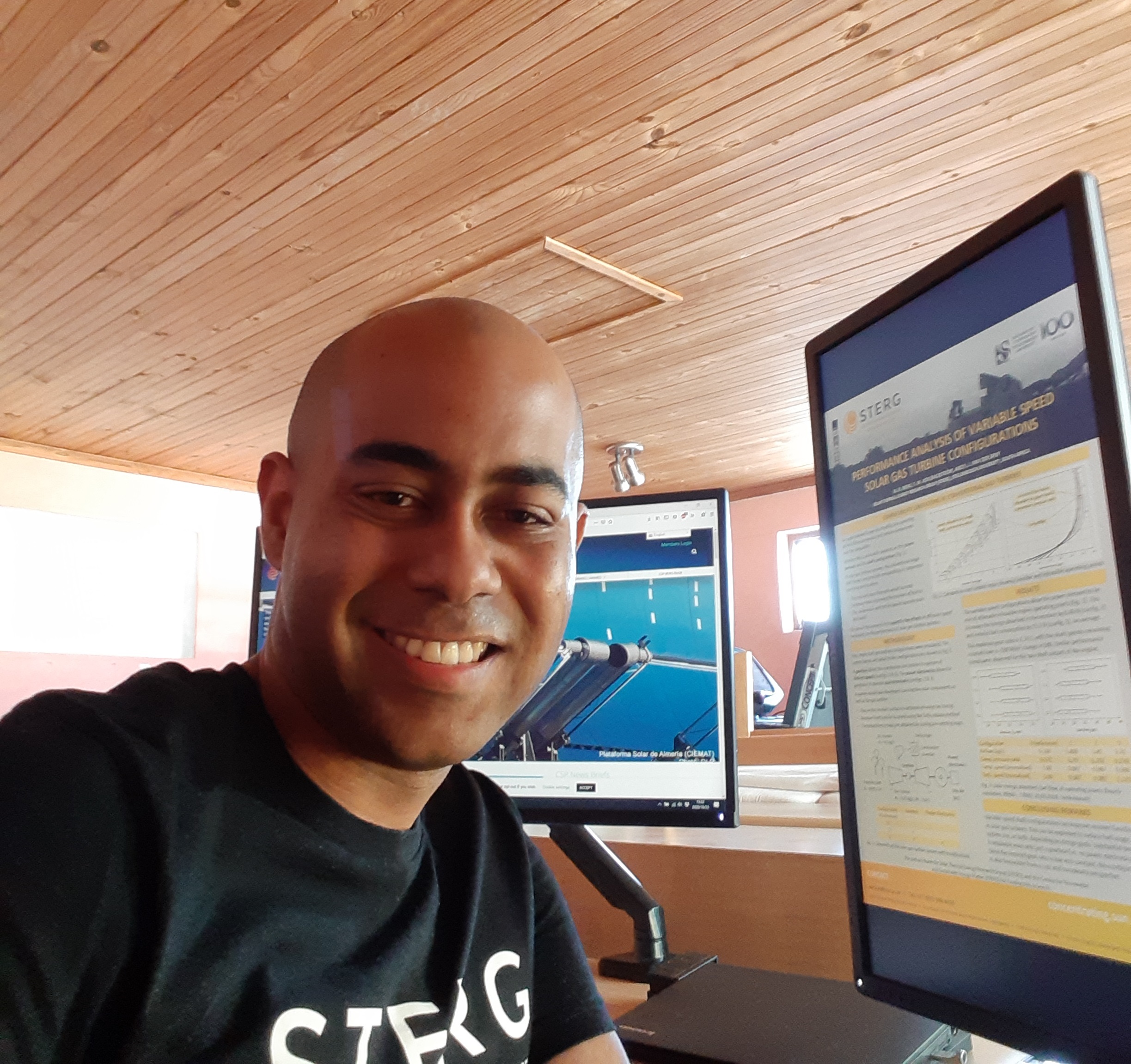This year marks the first online SolarPACES conference, which has proven itself to be a great success. Under usual circumstances, it would have taken place in Albuquerque, New Mexico. Nonetheless, the conference experienced over 50 % more participants than in 2019, comprising of more than 500 attendees across 36 countries that could experience over 200 presentations and 140 posters. The technical presentations were complimented by an array of interesting plenary discussions, virtual award ceremonies, happy hours and meet & greet opportunities.
SolarPACES, the leading symposium for research and development in concentrating solar power (CSP) and chemical energy systems, hosted its 2020 conference from 28 September to 2 October. A total of 11 STERG members attended the online conference, of which eight presented their work to the CSP community in the form of pre-recorded presentations and e-posters. Presenters were also given the opportunity to discuss their work with fellow participants in live Q&A sessions. STERG attendees had the pleasure to brush “virtual shoulders” with Dr Paul Gauche, a founding member of STERG, who is now managing the Concentrating Solar Technologies department at Sandia National Laboratories in Albuquerque. Seranya Moodley, a recently graduated STERG alumna, also presented her Masters research at the conference.
Some of this year’s focus areas included advances in thermal energy storage for CSP, the hybridization of CSP and Photovoltaic power plants, as well as progress in the Generation 3 CSP (more widely known as Gen3 CSP) program. This program focuses on achieving remarkable cost reductions and improved efficiency in CSP. According to Derwalt Erasmus, a Masters student of STERG, the conference provided him with great coverage on particle receivers. A fellow STERG member, Schalk Lombard, found it very insightful to see exactly where the field of renewable energy is heading: “This was my first experience with SolarPACES … chatting to some of the most brilliant minds in the field gave me hope that the world can be dependent on solar energy, even for domestic use.” STERG Masters candidate, Andreas Liebenberg, summarizes his conference experience as “informative, interesting and interactive”.
STERG presented research on concentrating solar technologies for high temperature process heat applications in South Africa (with a focus on sustainable hydrogen production), design and optimization of heliopod field layouts, heliostat calibration with drones, aiming strategies for circular aperture receivers, variable speed solar gas turbines and wireless communication in modular heliostat fields.
The ability of the CSP community to adapt to the rollercoaster that is 2020 is commendable, with this year’s SolarPACES conference serving as a clear testament to our resilience. A warm congratulations can be extended to all STERG members who contributed by showcasing their research. It is the combined effort and support of staff and students that made this opportunity possible. We look forward to an in-person conference in 2021 and encourage everyone to attend.
Andreas Liebenberg and Matthew Meas with their poster presentations.

